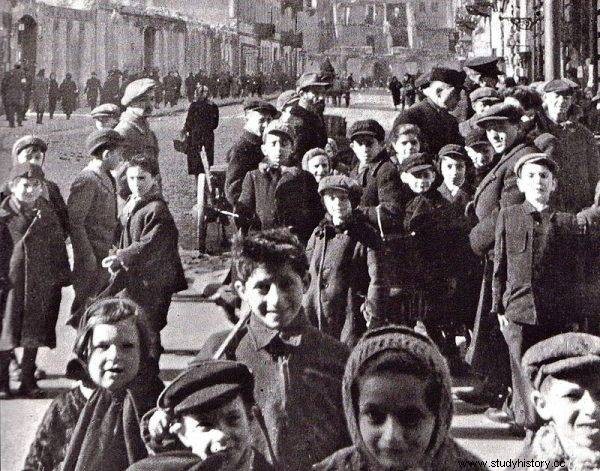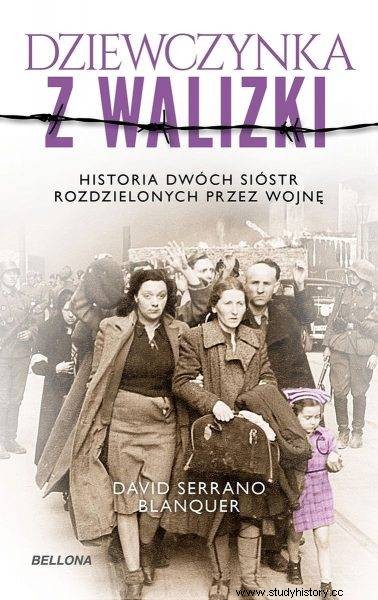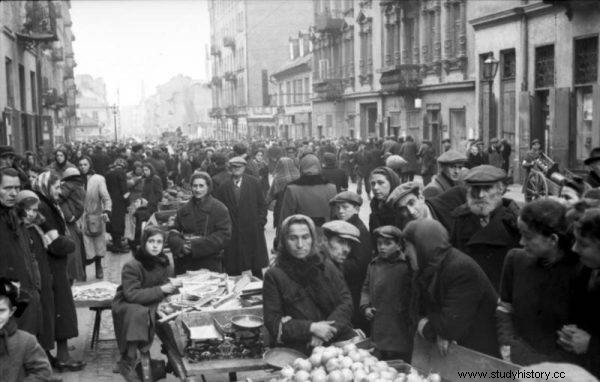Newborns and infants were starving in the streets. And yet new ones were born ... What was the driving force behind the parents who, confined to the ghetto, constantly on the verge of death, still decided to have a child? Why in humans this strong desire to have children in hell?
Giza thought the people who advised her to talk to me were absolutely right. At that time, I didn't know why. I was embraced by her heartfelt embrace never before given to me by a complete stranger. I quickly understood why she reacted like this. Within minutes, the tension in her face was gone, her body loosened. There was a completely different person in front of me, with a sad, sweet look and harmonious, free movements. Giza looked at me warmly and began to tell about her roots and life.
Upside down
She was born on November 7, 1940 in the Warsaw ghetto. When she was born, her parents - mother Edward nee Gelbtrunk and father Henryk Alterwajn - were very young. I have not been able to determine whether they had already lived in this part of Warsaw or had been resettled there as Jews, when the Nazis decided to isolate Jews from their shipment to the death camps in Auschwitz II-Birkenau, Treblinka, Majdanek, Sobibór and Chełmno . Years later, when Giza showed me a picture of my parents, I found out how young they were.
Edwarda had a teenage face, round cheeks, childish eyes, and youthful sensual lips. Her long, jet black hair, combed with a parting in the middle, was gathered in a ponytail. She tied a dark female handkerchief around her slender neck. She was educated and refined, and when this picture was taken, nothing indicated that she would soon face a terrible fate.

Children from the Warsaw Ghetto
Henryk, in an elegant checked shirt and a dark tie, peering carefully from under his high eyebrows, seemed to be a smart boy with curly hair and a broad, cheerful face.
The young couple had many friends. Henry imported crystals from Czechoslovakia. He was a bright entrepreneur, business was going well, and his family's future was bright. They were getting better and better, and suddenly everything changed; rather unexpectedly, though some symptoms might have heralded it.
"Our life turned upside down in an instant," Giza insists.
Unfinished Movie
The Warsaw ghetto, as detailed in the document from Yad Vashem, was the largest ghetto in Europe during the Second World War. It occupied 2.4% of the city's area. In November 1940, when Giza was born, it was finally closed.
a third of the city's inhabitants were crowded there, a total of about 400,000 people, including Jews brought from other cities in the east of the country . They were forced to erect a wall that separated them from the outside world. The area was divided into two closed parts:a large ghetto and a small ghetto, connected by a wooden footbridge. As they walked across the rickety bridge, they watched the life of the rest of the city. People crammed into the ghetto, deprived of food and drugs, enslaved, tormented by terror, persecuted and tortured, simply tried to survive.

The text is an excerpt from David Serrano Blanquer's book "Little Girl with a Suitcase", which has just been released by Bellona.
Giza was born in tragic conditions, but the Nazis deceived the Germans with propaganda films showing how the soulless, carefree ghetto inhabitants indifferently pass skinny corpses lying in the gutters; how sophisticated Jews throw great parties while paupers beg for alms or die in the streets. This manipulation left the West unsure what to believe.
Only years later, thanks to the wonderful picture of the Israeli documentary filmmaker Yael Hersonski Unfinished Film , we realized, to our own horror, that joyful scenes were staged, that they were filmed with actors, directed, set design was prepared . All of this was to serve the powerful Nazi propaganda machine.
Fighting the enemy
Hitler recognized that the Jews were his main enemies and that they had to be annihilated. Jewish inhabitants of Poland have been exposed to anti-Semitism for decades. They were persecuted by the Soviets before falling into the clutches of the ruthless Germans. Young people, such as Edwarda and Henryk, shared their fate with other Jews locked up in the ghetto. Crowded to the limit.
And yet, despite these prison conditions, cramped conditions, epidemics and ubiquitous death, the inhabitants of the ghetto tried to survive. They organized cultural events, and artists and creators did not hesitate to show the tragedy that hit them. Libraries were opened, Oneg Shabbat was established, theater plays were staged, orchestras played, and secret youth organizations were established. Life had to go on, so people looked for ways to keep it going.

The inhabitants of the ghetto tried to keep appearances of normalcy. Life in the gated community continued…
The most difficult decisions for me to comprehend were also made in the ghetto:about having children. This thread appears frequently in my conversations with students. Desire for children in Hell? One might think - especially when you are already a parent - that the decision to bring children to life in such terrible conditions is mindless, ruthless, even inhuman .
But this applies not only to the ghetto. It was the same, under similar conditions, during the 900-day siege of Stalingrad, which began in 1941, and more recently in Sarajevo during the 1992–1995 Balkan War. Reason? It was necessary to ensure generational continuity by having as many children as possible into the world. And in this way to oppose the enemy, build the future.
That's why Giza was born.
Source:
The text is an excerpt from David Serrano Blanquer's book "Little Girl with a Suitcase", which has just been released by Bellona.
